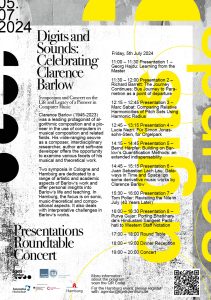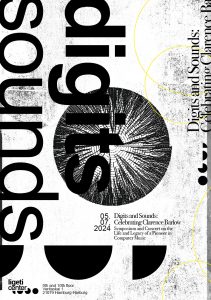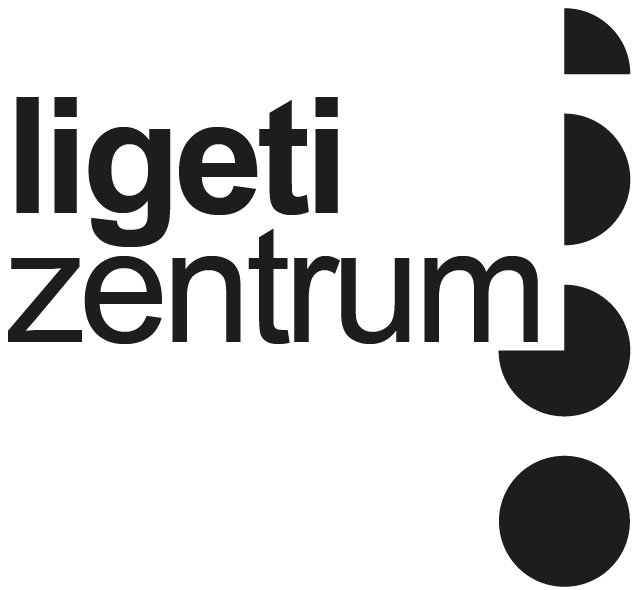Digits and Sounds:
Celebrating Clarence Barlow - Symposium and Concert on the Life and Legacy of a Pioneer in Computer Music
Friday, 5th July 2024, 10:45 – 21:00, ligeti center, 9th & 10th floor
A series of events in Cologne and Hamburg to commemorate the works of composer Clarence Barlow.
→ For the program curated by the Institute of Musicology at the University of Cologne, on June, 29 please visit: Event at the Institute of Musicology at the University of Cologne / https://uni.koeln/rdbcq
Clarence Barlow was a leading protagonist of algorithmic composition and a pioneer in the use of computers in musical composition and related fields. His wide-ranging oeuvre as a composer, interdisciplinary researcher, author and software developer offers the opportunity to examine various facets of his musical and theoretical work. Instrumental and electronic works from various creative phases will be performed in two concerts. Two symposia are dedicated to a range of artistic and academic aspects of Barlow’s work and offer personal insights into Barlow’s life and teaching. In Cologne, the focus is on structural and semantic levels from a linguistic and musicological perspective. It also deals with interpretative challenges in Barlow’s works. In Hamburg, the focus is on sonic, music-theoretical and compositional aspects.
Barlow passed away in June 2023 at age 77. He was noted for his pioneering work in computer music and computational music theory. He also laid the ground for musical conceptionalism and his own direction of spectralism. His exceptional humor (which included countless variations of his own name) was deeply rooted in his heightened sense for language and semantic ambiguity. Born in Calcutta on December 27, 1945, into a Catholic and English-speaking enclave, he was educated in Western classical music, and didn’t have any exposure to Indian classical music traditions before age 18. Trained as a pianist, Barlow started composing at age 11, discovering contemporary music at age 15 through the offerings of the local Goethe institute. With a knack for mathematics and astrophysics, he obtained a bachelor’s degree in natural science but also taught music theory at the Calcutta Conservatory until, in 1968, he moved to Cologne, Germany to study with Bernd Alois Zimmermann and, after his teacher’s death in 1970, with Karlheinz Stockhausen. Clarence Barlow taught at the Darmstadt Summer Courses from 1982. He also taught computer music at the Cologne University of Music from 1984 and, from 1990, held several positions at the Royal Conservatoire in The Hague. From 2006 to 2019, he was Corwin Professor and Head of Composition at the University of California, Santa Barbara. Barlow began composing with computers in 1971 and developed complex software for algorithmic composition and music analysis. He has created around 70 instrumental and vocal works and around 35 electronic, electro-acoustic and multimedia works. His artistic work is accompanied by numerous text and book publications as author and editor. Barlow was a member of the Cologne-based Feedback Studio Verlag and co-founder of the Initiative Musik und Informatik Köln – GIMIK e.V.
For the Hamburg event please register at: agentur@ligeti-zentrum.de
free admission
For the live stream please visit our YouTube channel
Symposium
10:45 – 11:00 Welcome
///
11:00 – 11:30 Presentation 1 – Georg Hajdu: Learning from the Master
Clarence Barlow was a major influence throughout my formative years as I transitioned from a molecular biologist with an interest in experimental music composition to a composer with an interest in the exact sciences. Meeting him in 1980, I witnessed his enormous creativity, playfulness and wit for nearly a decade before moving to California to obtain a PhD in music. Much of my work is a continuation and elaboration of his and related ideas which manifest itself in my compositions, theoretical work and software development.
Georg Hajdu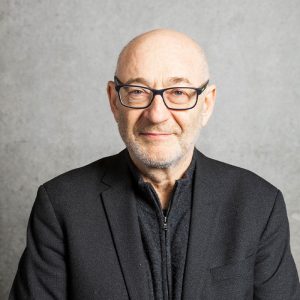 , born 1960, is a German composer and professor. After studies in molecular biology and composition in Cologne as well as computer music at UC Berkeley's Center for New Music and Audio Technologies (CNMAT), he graduated with a PhD in 1994. He co-wrote the opera Der Sprung - Beschreibung einer Oper with librettist Thomas Brasch. In May 2002, his networked performance environment Quintet.net was used in a multimedia opera performed at the Munich Biennale for Contemporary Opera. In the same year, he was appointed professor of multimedia composition at the Hamburg University of Music and Drama (HfMT), where he founded Germany’s first master’s program in multimedia composition in 2004, and the Center for Microtonal Music and Multimedia (ZM4) in 2012. In 2010, he was artist in residence at the Goethe Institute in Boston and visiting professor at Northeastern University. In addition, he has been involved in a number of national and international projects such as the Culture 2007 project CO-ME-DI-A and is the founding director of the ligeti center.
, born 1960, is a German composer and professor. After studies in molecular biology and composition in Cologne as well as computer music at UC Berkeley's Center for New Music and Audio Technologies (CNMAT), he graduated with a PhD in 1994. He co-wrote the opera Der Sprung - Beschreibung einer Oper with librettist Thomas Brasch. In May 2002, his networked performance environment Quintet.net was used in a multimedia opera performed at the Munich Biennale for Contemporary Opera. In the same year, he was appointed professor of multimedia composition at the Hamburg University of Music and Drama (HfMT), where he founded Germany’s first master’s program in multimedia composition in 2004, and the Center for Microtonal Music and Multimedia (ZM4) in 2012. In 2010, he was artist in residence at the Goethe Institute in Boston and visiting professor at Northeastern University. In addition, he has been involved in a number of national and international projects such as the Culture 2007 project CO-ME-DI-A and is the founding director of the ligeti center.
Photo credit: Jasmin Gritzka
11:30 – 12:00 Presentation 2 – Richard Barrett: The Journey Continues: Bus Journey to Parametron as a point of departure
Clarence Barlow’s book Bus Journey to Parametron is an account of the processes of research and composition during the second half of the 1970s that went into his piano piece Çoğluotobüsişletmesi, but it also proposes radical new ways of thinking about musical material and structure which go far beyond Clarence’s own music, so that it might be seen as a valuable contribution to “artistic research” in the 21st century sense of an artistic practice that generates knowledge with much wider applicability.
Richard Barrett
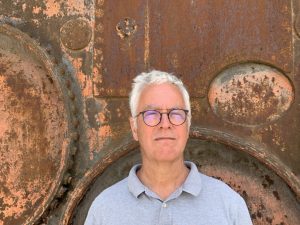
(Swansea, 1959) is a composer and performer of music whose work encompasses both intricately structured compositions and free improvisation, often in intimate proximity to each other. He is on the faculty of the Institute of Sonology in The Hague and of Leiden University, and is the author of two books, Music of Possibility and Transforming Moments (Vision Edition 2018 and 2023).
12:00 – 12:15 Short Break
///
12:15 – 12:45 Presentation 3 – Marc Sabat: Comparing Relative Harmonicities of Pitch Sets Using Harmonic Radius
Harmonic radius offers a novel perspective on comparing the relative harmonicities of pitch collections tuned in rational intonation (JI). By means of a simple calculation that may be estimated in real time while playing, it enables musicians to further explore sounds of microtonal JI, finding connections between intonation and the psychoacoustics of harmony. Using various forms of harmonic radius, it is possible to generate and compare intervals, chords, melodic gamuts and compact otonal subsets of harmonic space that include higher primes, while optimising possibilities for modulation and harmonicity. Evaluating harmonic radius for subsets (dyads, triads, etc.) offers an approach to compare the "complexity" of various scales.
Canadian composer of Ukrainian descent Marc Sabat (*1965)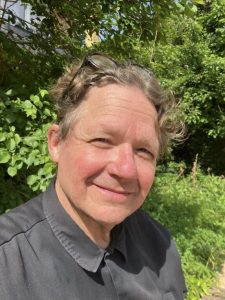 has been based in Berlin since 1999. He makes pieces for concerts and installations, drawing inspiration from ongoing research about the sounding and perception of microtonal rational intonation (JI). Largely self-taught as a composer, Sabat studied violin at the University of Toronto, at the Juilliard School in New York, and computer music at McGill University, as well as working privately with Malcolm Goldstein, James Tenney and Walter Zimmermann, among others. With Wolfgang von Schweinitz he developed the Extended Helmholtz-Ellis JI Pitch Notation and is a pioneer of instrumental music written and performed in JI. Sabat’s work is presented internationally, available online and in numerous published editions. He teaches composition and the theory and practice of intonation at the Universität der Künste Berlin and is currently a doctoral research fellow at the Sibelius Academy Helsinki. Together with colleagues Catherine Lamb and Rebecca Lane he co-initiated the Harmonic Space Orchestra in 2019.
has been based in Berlin since 1999. He makes pieces for concerts and installations, drawing inspiration from ongoing research about the sounding and perception of microtonal rational intonation (JI). Largely self-taught as a composer, Sabat studied violin at the University of Toronto, at the Juilliard School in New York, and computer music at McGill University, as well as working privately with Malcolm Goldstein, James Tenney and Walter Zimmermann, among others. With Wolfgang von Schweinitz he developed the Extended Helmholtz-Ellis JI Pitch Notation and is a pioneer of instrumental music written and performed in JI. Sabat’s work is presented internationally, available online and in numerous published editions. He teaches composition and the theory and practice of intonation at the Universität der Künste Berlin and is currently a doctoral research fellow at the Sibelius Academy Helsinki. Together with colleagues Catherine Lamb and Rebecca Lane he co-initiated the Harmonic Space Orchestra in 2019.
12:45 – 13:15 Presentation 4 – Lucie Nezri: Für Simon Jonassohn-Stein, for Orgelpark
Last February, I had the chance to write a version of Clarence Barlow's Für Simon Jonassohn-Stein for the two programmable organs at Orgelpark (NL). Originally composed for the Saint-Peter Church's organ (DE), this short and fascinating piece subsumes Barlow's algorithmic model of chorale synthesis based on mathematics, specifically algebra and geometry.
During this presentation, I will introduce the core aspects of the piece, while emphasizing how speculative and fun this entire project was.
Lucie Nezri 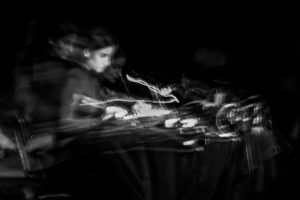 is a composer, artist, and performer born in Hyères (FR) and currently based in Den Haag (NL). In her pieces, she combines algorithmic techniques of composition based on probabilities and a focus on harmony and tuning. Nezri is also particularly interested in making/exploring different versions of her pieces as well as reconstructing algorithmic pieces made by others, as a means to understand and view these works from multiple angles.
is a composer, artist, and performer born in Hyères (FR) and currently based in Den Haag (NL). In her pieces, she combines algorithmic techniques of composition based on probabilities and a focus on harmony and tuning. Nezri is also particularly interested in making/exploring different versions of her pieces as well as reconstructing algorithmic pieces made by others, as a means to understand and view these works from multiple angles.
Photo credit: Jente Waerzeggers
13:15 – 14:15 Lunch Break
///
14:15 – 14:45 Presentation 5 – Bernd Härpfer: Building on Barlow's Quantification Methods: an extended indispensability
A key tool of Barlow is the quantification of harmony and meter. He stressed the isomorphism between the two, identifying periodicity as a common basis and thus linking different phenomena and timescales. He focused on the underlying numerical ratios and developed the concepts of harmonicity and metricity, describing the basic algorithms for these as indigestibility and indispensability. I’ll take a critical look at indispensability, show my further development and highlight aspects of Barlow's mindset, which I got to know in depth through personal contact.
Bernd Härpfer 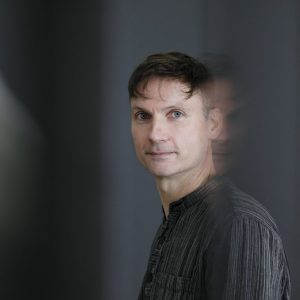 is a Composer, artistic researcher and software developer. Studies in composition and music research at the Institute for Sonology, The Hague and the University of Cologne. Studies in algorithmic composition with Clarence Barlow. Research assistant at IMWI, University of Music Karlsruhe. Associate lecturer at the Humboldt University Berlin. Guest lecturer at various universities and institutes in Germany, USA and Korea. Board member of the Initiative Musik und Informatik Köln – GIMIK e.V.
is a Composer, artistic researcher and software developer. Studies in composition and music research at the Institute for Sonology, The Hague and the University of Cologne. Studies in algorithmic composition with Clarence Barlow. Research assistant at IMWI, University of Music Karlsruhe. Associate lecturer at the Humboldt University Berlin. Guest lecturer at various universities and institutes in Germany, USA and Korea. Board member of the Initiative Musik und Informatik Köln – GIMIK e.V.
14:45 – 15:15 Presentation 6 – Juan Sebastian Lach Lau: Gateways in Time and Space: on some derivative music works by Clarence Barlow

15:30 – 16:00 Presentation 7 – Goran Lazarevic: Usage of Autobusk algorithms in health-related contexts, from BCMI to Healing Soundscapes
For his 1986 piece “Variazioni e un pianoforte meccanico”, Clarence Barlow created a series of algorithms describing different musical parameters and used these in his “AUTOBUSK” Atari ST software. Prof. Dr. Georg Hajdu later continued to further develop it as a long-term, still ongoing, Max/MSP software project under the name DJster. In my talk I will give some more insights into workings and usages of DJster, with special focus on several projects I myself have been a part of. These projects deal with both real time and non-real time score and music generation, and are rooted in health related contexts – some had an ambitious goal of creating a viable BCMI interface to help the vegetative state patients and those suffering from locked-in syndrome, and other, still active, project deals with generating music for the hospital waiting areas.
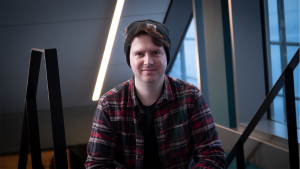
Photo by Tam Thi Pham
16:00 – 16:30 Presentation 8 – Purva Gujar-Kale: Porting Bhatkhande's Hindustani Sangeet Paddhati to Western Staff Notation
Vishnu Bhatkhande (1860 – 1936) revolutionized North Indian Classical Music theory, categorizing ragas into ten thaats. His seminal work, Hindustani Sangeet Paddhati, comprises over 1900 compositions across 150+ ragas. Despite partial transcriptions by Walter Kaufmann in 1968, Bhatkhande's work remains untranslated. To address this gap, I devised InSargam, an Indian Classical Music Notation Editor, standardizing digital notation for ICM and enabling the conversion of all 1900+ compositions into Western staff notation, thus facilitating accessibility for the Western music community.
Purva Gujar–Kale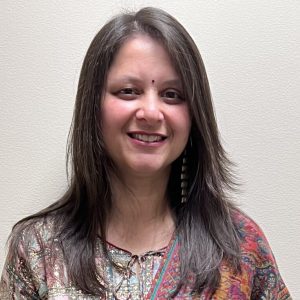 , a Technical Product Manager and Engineer at Dolby Labs, has contributed to the engineering team behind Dolby Atmos Cinema Sound System, honored with an Academy Award at the 2024 Technical Oscars. She has a Bachelor’s of Engineering in Electronics, and a Master’s and PhD in Media Arts and Technology from University of California Santa Barbara. She co-founded the ICMA Foundation, dedicated to Indian Classical Music preservation.
, a Technical Product Manager and Engineer at Dolby Labs, has contributed to the engineering team behind Dolby Atmos Cinema Sound System, honored with an Academy Award at the 2024 Technical Oscars. She has a Bachelor’s of Engineering in Electronics, and a Master’s and PhD in Media Arts and Technology from University of California Santa Barbara. She co-founded the ICMA Foundation, dedicated to Indian Classical Music preservation.
17:00 – 18:00 Round Table
///
18:00 – 19:00 Dinner Reception
///
Digits and Sounds: Concert
July, 5th, 19:00, 10th floor, ligeti center, Veritaskai 1, 21079 Hamburg-Harburg
The concert includes four pieces–– two of them instrumental, the other two electronic –– from different periods. Featuring Çoǧluotobüsişletmesi from 1979, a piece that established Barlow’s fame as a leading computer composer and is considered one of the most difficult pieces written for piano as well as 3C2=[ħ] Chronometry from 2017, the concert represents 38 years of Barlow’s creative life during which he made major contributions to the fields of algorithmic and multimedia composition, conceptualism, and spectralism, just to name a few. His pieces such as Pinball Play in which a musical ball bounce off the notes of Bohlen-Pierce scale or Approximating Pi, which on a musical level delivers what the title promises, are characterized by a strict sense of control on the one hand and playfulness, humor and a penchant for ambiguity and illusion on the other. Things are not what they appear to be, or they are multiple things at once.
Clarence Barlow (2007): Approximating Pi
Fixed Media, Construction Method
Point of departure: the converging series pi = 4(1 - 1/3 + 1/5 - 1/7 + 1/9 ...).
Each convergence gets a time window of 5040 samples (twice the lowest common multiple of the numbers 1-10), in which ten square wave partials of frequencies 8¾n Hz and amplitude 2^d are set up, '8¾' deriving from the 5040 samples, 'n' being the partial number and 'd' the n-th digit in the convergence's decimal representation; e.g. for '3.141592654', the ten partials' amplitudes are 213, 211, 214, 211,215, 219 etc., thereafter rescaled by the sawtooth-spectral factor 2pi/n, where 'n' is still the partial number. The convergences make the digits stabilize from left to right to a value approaching pi, the resultant timbre moving from turbulence to constancy over 4 x 1019 x 5040 = 20.16 x 10^12 samples or ~14½ years. The installation can be pitch-shifted (by sample-dropping) and/or time-truncated. Here the six sound channels are transposed from 8¾ Hz to frequencies 9, 28, 50, 72, 96 and 123 times higher; the duration is a number of hours, during which the leftmost digits can be seen to gradually stabilize.
Clarence Barlow (2010): Pinball Play
From Clarence Barlow: In 1978 | developed a method for quantitatively establishing the harmonicity of an interval of pitch, given the relationship of its frequencies as a ratio. For instance, according to this system, the 2:3 perfect fifth is 0.273 harmonic, the 4:5 major third 0.119 etc. This method can convert a scale given in cents from a designated tonic into ratios related to that tonic. The intrascalar intervals' harmonicities can then be multi-dimensionally scaled, as in the square-shaped map below: the more harmonic the relationship of two given pitches, the closer together they are in the map.
This diagram shows the multi-dimensional scaling of the rationalized Bohlen-Pierce ("BP") scale spanning two adjacent perfect twelfths. As the main part of the compositional process, four straight lines are repeatedly projected into the square, each from a different side. If a line meets one of the notes of the scale, the note is sounded and the line is generally deflected to a spatially nearby note, which is also sounded. This process is repeated until a path is re-traversed or the line exits from the diagram.
These constantly varying trajectories, not unlike those in a pinball game, generate melodies distributed among four clarinets, one for each side of the diagram. The four clarinets repeatedly play a new melody starting at multiples of 4", 3", 30 " and 2u" respectively. The melodies initially have a length of about half a second but gradually get longer. The diagram also shows the final four melodies of the piece.
The word "Play" in the title, a play on words, refers to the obvious "game" and "dramaturgy" and indirectly to my melodic "prey" or "catch", which is "prooi" in Dutch (the BP scale was co-invented by Kees van Prooijen).
Clarence Barlow (2017): 3C2=[ħ] Chronometry
Fixed media

13C2=[♄] (pronunciation: "2 out of 13 chronometry") is the fifth in a series of twelve-channel electronic pieces created in 2016-2017, all of which share the fade map shown below, consisting of a fixed permutation of 78 of two combinations of 13 sound tracks.
13C2=[♄] is a percussive piece in which twelve "instruments" in twelve sound tracks play a perpetuum mobile in a total of 48 metres, each containing one to twelve pulses, nine per second. Each track begins in a metre with a number of pulses equal to the track number. Each metre (except the one with only one pulse) corresponds to a unique permutation of groups of two and/or three pulses, e.g. in the three 7-pulse metres 2+2+3, 2+3+2 and 3+2+2.
The metres with a length of 12 pulses are twelve in number. At 6'13⅓" the metres begin to increase in length - track by track - until 7'20", where all twelve tracks contain synchronised 12-pulse metres of equal length but different lengths.
The "instruments" in question here are synthetic timbral interpolations between sine (track 1) and sawtooth (track 12) oscillations. Inspired by the work of J. M. Grey et al. (1978), the spectra become brighter in tone colour from track to track due to the addition of a rising formant-like structure ("spectral centroid") with an increase in attack time. The fundamental pitches of these spectra - rising chromatically from 110 to 208 Hz (A to G sharp) - correspond to the metric priority of the pulses calculated by me.
Clarence Barlow (1979): Çoǧluotobüsişletmesi
Daan Vandewalle (piano)
Çoǧluotobüsişletmesi is a thirty-minute piano piece, the composition of which was made possible by extensive research in (among other things) the fields of tonality and metricism. This is an account of this research.
For example, it has been felt in various parts of the world and since antiquity that certain intervals - octave and fifth, for instance possess a greater degree of harmonicity than the others (e.g. the tritone). Furthermore, in the more harmonic intervals, one of the two (termed the root) seems to carry greater weight than the other - the role of root is ascribed in e.g. the octave, fifth and major third to the lower note, but in the perfect fourth and minor sixth, the polarisation is found to be reversed. For several centuries now, various slightly divergent lists displaying the conjectured relative harmonicity of the twelve chromatic intervals have been appearing, in recent times with reference to their polarity as well; what has been lacking, however, is an explicit, consistent method bearing convincing results, capable of application to all kinds of intervals, including such e.g. with quartertone tuning (and this piece was to contain some). By means of a specifically developed formula yielding a complexity or indigestibility index for natural numbers (e.g. the values for the numbers one to nine indicate an increasing indigestibility in the order 1-2-4-3-8-6-9-5-7) it was found possible to evaluate a tonality coefficient for any desired interval, given its tuning as a ratio of whole numbers (e.g. the fifth, fourth and major third were found to have tonalities of +0,273, -0,214 and +0.119, respectively, the plus and minus signs indicating the position of the root in the interval: Plus = lower note, minus = upper). Tempered intervals - dodecaphonic and microintervallic - were rationalised by searching in their immediate neighbourhood for the tuning with the highest tonality value (a test with the twelve tempered intervals in an octave produced tunings practically identical with just intonation), It was now possible to set up tonal fields of varying strength, in that in a given mode with a given tonic, the degree of desirability or preference accorded to each Pitch would be determined on the basis of its tonality, measured against the tonic.
Similarly in the field of metricism it has been long felt that certain pulses in a given metre - the first and third in a four-beat-bar, for example - are stronger, more necessary for a characterisation of the metre than the others. Bymeans of a formula yielding an indispensibility index for each Pulse in any given metre (e.g. in a 6/8 bar the values for the eighthnotes were found to be 5-0-2-4-1-3, as against 5-0-3-1-4-2 for 3/4) it was possible to set upmetric fields of varying strength, in that in a given metre, the degree of desirability of attack on each of the Pulses could be determined via the indispensibility value -:- it was realised that the desirability of pitches was interrelated with that of the pulses which were to carry them - the combined desirability value was converted into reality by a system of priority and probability linked with random choice.
Another field which was delved into was that of consonance (distinct from harmonicity!: this has to do with the Physical roughness certain intervals are observed to engender in the hearing mechanism). Based on the work of acousticians and aural physiologists such as Plomp and Levelt, Zwicker and Feldtkeller, Fletcher and Munson, a measure of consonance was developed, which worked for any interval, given the timbre of the instrument sounded. It was found, for example, that in the lowest octave of the piano, a perfect fourth sounds rougher, more dissonant than a tritone, despite the former's greater harmonic content.
The methods outlined here for the treatment of consonance, tonality and metre are so general as to be reemployable in totally different contexts.
A word concerning material and organization: Çoǧluotobüsişletmesi was composed for retuned piano, the same four notes in every octave being lowered by exactly one quartertone, On the Pitch (or 'microtemporal') level it is a modal piece, deriving entirely from twelve seven-note modal cycles, in which any two consecutive scale-degrees are always a half- to a wholetone apart (only three such modal cycles exist without microtonal retuning, one of these comprising the classical ecclesiastical cycle of seven modes). Patterns of regular beatsgrouped and divided (two 'orders' of metric organization) to form six different metres in each of fourteen tempiform the basis for the rhythmic ( 'macrotemporal') aspect of the piece.
The most important general concept underlying this composition is the organisation of texture, defined in this context as being a result of the conformity between various parallel musical streams (in each of which no two events - notes or chords - ever overlap in time) of differing and varying consistency. Conformity here implies the degree or material similarity (of keys and/or metre) between streams, consistency the interaction of eight parameters: harmonic and metric cohesion (ranging down to atonality and ametricism), melodic and (ranging to pointillism and syncopation), chordal and tactile density (the quantity of pitches per chord, of chords per unit time), as well as dynamics (loudness) and articulation (connectedness).
The pianist Daan Vandewalle 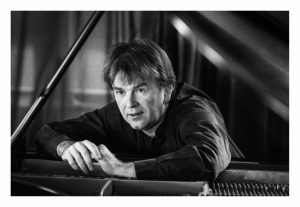 is an internationally acclaimed performer of 20th and 21st century piano music. His repertoire consists of hundreds of pieces, integrales of most of the well-known composers of the 20th century such as Ives, Messiaen, Schonberg as well as numerous premieres that resulted from intense collaborations with composers of today.
is an internationally acclaimed performer of 20th and 21st century piano music. His repertoire consists of hundreds of pieces, integrales of most of the well-known composers of the 20th century such as Ives, Messiaen, Schonberg as well as numerous premieres that resulted from intense collaborations with composers of today.
He has performed in a wide range of venues, from small clubs in the underground, experimental music scene to established venues such as the Prague Spring Festival, the Lincoln Centre en Carnegie Hall New York, Auditorio Nacional Madrid, the Mozarteum Salzburg, Theatre des Chatelets Paris, Konzerthaus Berlin and many others.
He premiered dozens of new pieces e.g. Frederic Rzewski, Clarence Barlow, Maria De Alvear, Fred Frith and Gordon Mumma. He is one of the only pianists in the world who play the entire Opus Clavicembalisticum by Sorabji. Apart from his work as a soloist he forms a piano-duo with the legendary Australian pianist Geoffrey Douglas Madge, and duos with cellist Arne Deforce and singer Salome Kammer.
Since 2001 he teaches piano at the conservatory of Ghent, University of Ghent College.
Photo credit: DaanVandewalle2 © Fred Debrock
